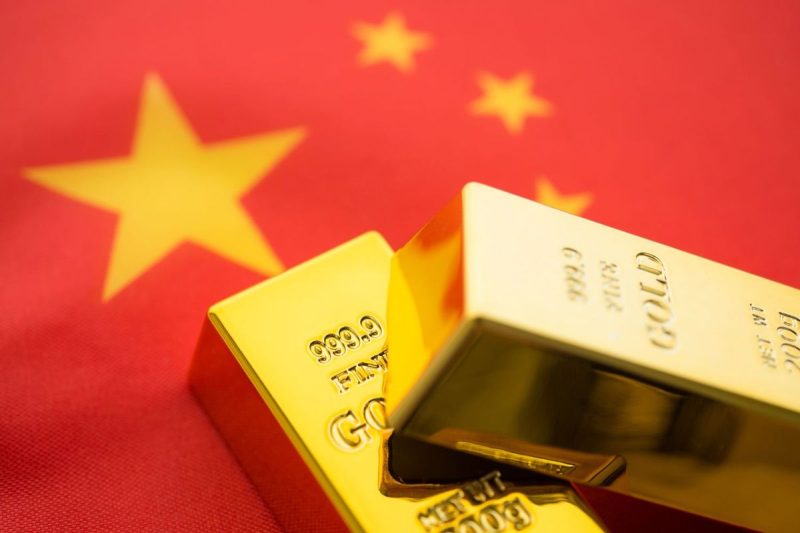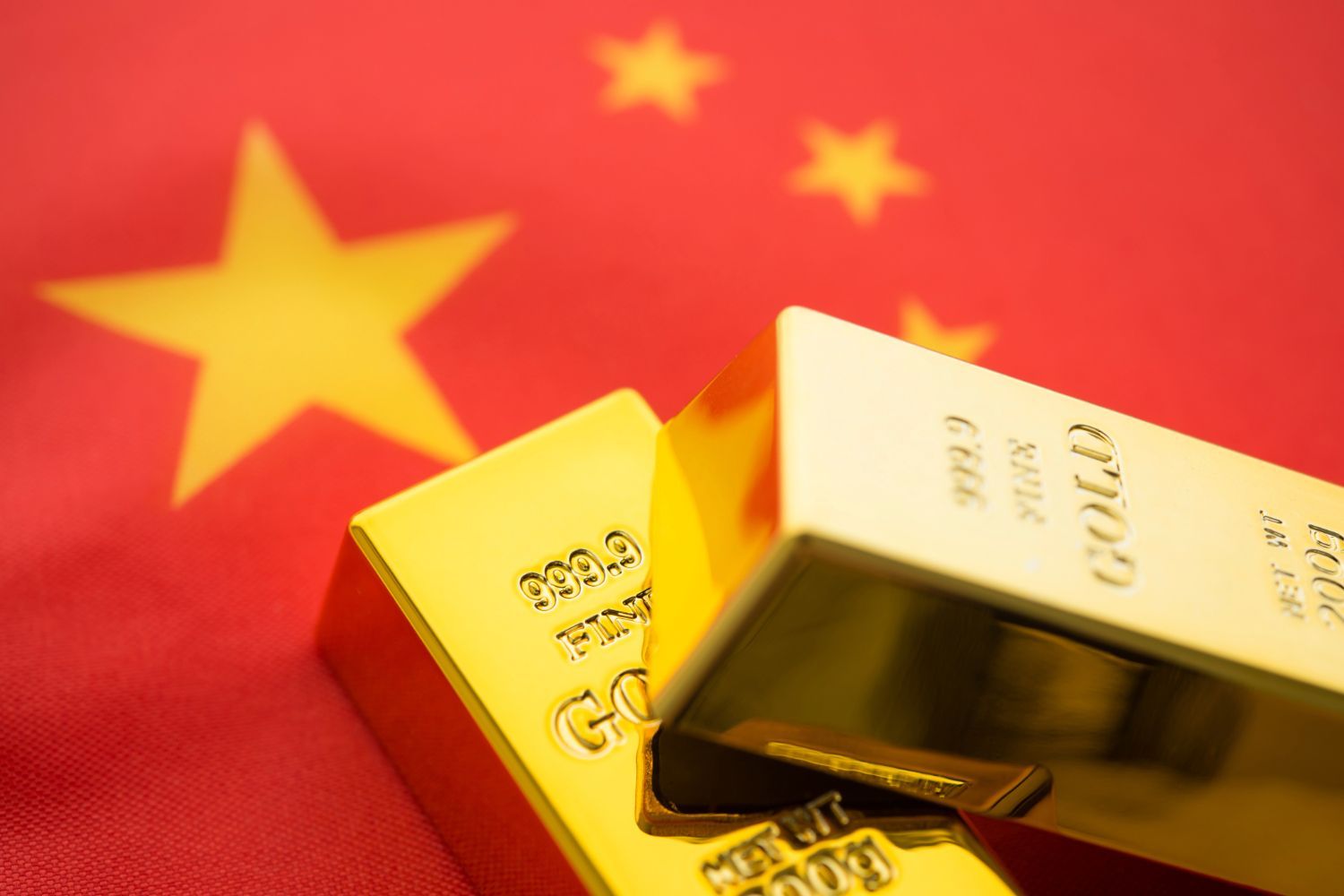

US-China tensions are causing a shift in global gold market dynamics.
Escalating trade tensions with the US have prompted China to take a defensive stance economically. This has become a major gold price driver in 2025 and that trend is expected to continue in the years ahead.
The widening gap between the two nations, which is based on a series of issues, from Taiwan independence and dominion in the South China Sea to currency manipulation and trade deficits, is creating the types of headlines that drive investors, institutions and central banks to move more of their wealth into gold.
“The longer the tension and trade discussions continue, the more risk and uncertainty play into asset performance. Gold benefits significantly in this type of environment,’ the expert added.
China’s response to this heightened geopolitical and economic competition with the US has not been one of direct confrontation; rather, the Asian nation’s leadership has taken its usual profoundly pragmatic and strategic approach.
As it so happens, gold is playing a key role. China has already established itself as the world’s largest producer and consumer of gold, and is now looking to exert more control over the price.
1. PBOC shifting from US treasuries to gold
The People’s Bank of China (PBOC) has continued to increase its gold reserves for the third consecutive year in 2025, although its acquisitions are coming at a slower pace in recent months.
The World Gold Council reported in July that China’s official gold holdings have posted gains for eight consecutive months, with H1 2025 gold purchases coming in at 19 metric tons. Second only to the National Bank of Poland as one of the largest central bank buyers, China’s gold purchases have no doubt contributed to gold’s price.
The PBOC’s focus on increasing its gold reserves is not surprising given the current fiscal landscape.
“China is a large, growing economy and has a meaningful reserve portfolio that is actively managed as part of central programs and planning. The PBOC is principally responsible for managing that portfolio, which has traditionally held large portions in USD and USD-based assets (treasuries),” explained Cavatoni.
“What the increased level of disclosed and undisclosed purchases you see in our data indicates is that the PBOC is looking at domestic and foreign market conditions for managing their reserves in an optimal way. That includes recognition of the role gold can play in a portfolio and finding that role a key focus for growth.”
Charles-Henry Monchau, chief investment officer at Syz Group, believes the PBoC’s bullion purchases are a part of a larger strategy moving away from the nearly century-long hegemony of the US dollar over global trade and finance.
“In its place, China is betting on a dual foundation: gold and the yuan,” Monchau asserted recently, also insisting that China’s reduction of its dependence on the greenback is “not merely a matter of a portfolio rebalance.”
In this way, China would gain a more dominant position in global finance and no longer be at the mercy of US sanctions and other financial pressures. Monchau also lends credence to the claim of some analysts that the PBOC is underreporting its gold purchases to the International Monetary Fund.
‘This opacity is deliberate—by quietly shifting reserves from dollars into gold, China avoids alarming markets while progressively building leverage,” he said.
2. China’s insurance sector buying gold
China’s insurance sector represents an emerging demand segment for physical gold, further demonstrating the yellow metal’s function as a hedge against inflation and economic downturns.
In early February of this year, the Chinese government launched a pilot program allowing the nation’s 10 largest insurance companies to invest directly into gold.
Under the initiative, insurers can choose to allocate up to 1 percent of their assets to gold. This could open the door for up to 200 billion yuan, or more than US$27 billion, to enter the global gold market, as reported by Bloomberg.
China’s insurance sector is the second largest in the world behind the US, and if the pilot program is successful, it could serve as a precedent for other countries to allow similar programs to develop in their own insurance industries.
“This is an exciting development as it demonstrates both government and institutional understanding of gold, and provides an appropriate format for these institutions to build up the appropriate infrastructure and capabilities to add gold to diversified portfolios,” said Cavatoni, emphasizing the significance of the move.
“This will be an additional use case to consume gold and good for the global market. This practice is also capable of being rolled out in pilot programs elsewhere and may (in certain places) already exist.”
The Shanghai AU9999 contract is a physical gold trading contract that closely tracks the spot price of gold.
“It signals, for us, global use cases continuing to come online. And I think that’s actually the big story for gold, which is continuing to see people wanting access to it, industries having a need for it and impediments being removed.”
3. Shanghai Gold Exchange expansion
China is now making it easier for international investors to participate in the Shanghai Gold Exchange.
In late June, the exchange launched two new yuan-denominated gold contracts for physical delivery in Hong Kong, where it opened an offshore gold warehouse in Hong Kong run by the Bank of China.
It also waived storage, handling and exit fees for the calendar year for foreign buyers. Analysts see this as a major move toward strengthening China’s position in the global gold market.
Mario Innecco, who runs the maneco64 YouTube channel, sees the expansion of the Shanghai Gold Exchange as “highly significant” in moving the center of the gold market to China.
“This is an interesting development and one that is broadening an already open channel for approved foreign entities,” said the World Gold Council’s Cavatoni in an email. “If the expansion continues beyond what we have today, including the most recent announcement around vaulting overseas, the foreign community might become more active in what is currently a smaller portion of the domestic China gold market.”
There is also potential for strengthening the global position of renminbi.
“The new vault will significantly boost offshore RMB liquidity by enabling gold transactions in yuan rather than dollars,” said Doris Bao, founderof Gold Harvest Consulting and an advisor to the London Bullion Market Association (LBMA). “This also means China can now import gold using its own currency.”
Innecco also believes a stronger Shanghai Gold Exchange internationally could prove highly disruptive to the western gold futures market represented by the COMEX and the LBMA.
‘I think gold and silver will be priced from China in the next few years,” he added.
Securities Disclosure: I, Melissa Pistilli, hold no direct investment interest in any company mentioned in this article.